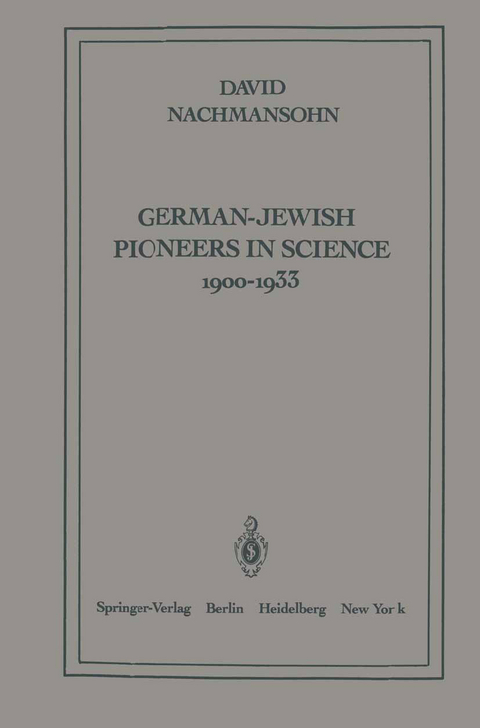
German-Jewish Pioneers in Science 1900–1933
Springer-Verlag New York Inc.
978-1-4612-9972-1 (ISBN)
I. Historical Background.- A. The Rise of Science in Germany.- B. Entrance of Jews into German Science.- II. Atomic Physics in the Early Twentieth Century.- A. Developments in Physics in the Late Nineteenth Century.- B. The Period Before World War I.- C. The Twenties.- D. The Lives of Franck and Born; Gustav Hertz.- E. Effects on Philosophy and Epistemology.- F. The Effects on Chemistry, Biochemistry, and Other Fields.- G. The Late Nineteen-Twenties; Rise of the Nazi Movement.- H. Nuclear Fission.- I. Nuclear Energy and the Atom Bomb.- III. Developments in Chemistry and Physiology in the Nineteenth Century.- A. Chemistry.- B. Physiology.- IV. Chemistry and Biochemistry in the Early 20th Century. The Kaiser Wilhelm Institutes in Berlin-Dahlem.- A. Fritz Haber (1868–1934).- B. Richard Willstätter (1872–1942).- C. Otto Heinrich Warburg (1883–1970).- D. Otto Meyerhof (1884–1951).- E. Carl Neuberg (1877–1956).- F. Gustav Embden (1874–1933).- G. General Growth of German Biochemistry.- H. Reflections on the Roots and Fruits of the Collaboration between German and Jewish Scientists.- V. Worldwide Effects on Biochemistry Due to Nazi Persecution.- A. Hans A. Krebs (1900- ).- B. Severo Ochoa (1905- ).- G. Rudolf Schoenheimer (1898–1941).- D. Ernst B. Chain (1906- ).- E. Collaboration between German and Israeli Scientists.- Concluding Remarks: Science and Society.- References.
| Zusatzinfo | XX, 392 p. |
|---|---|
| Verlagsort | New York, NY |
| Sprache | englisch |
| Maße | 155 x 235 mm |
| Themenwelt | Sachbuch/Ratgeber ► Natur / Technik ► Garten |
| Medizin / Pharmazie ► Allgemeines / Lexika | |
| Naturwissenschaften ► Biologie | |
| Naturwissenschaften ► Chemie | |
| Naturwissenschaften ► Physik / Astronomie ► Allgemeines / Lexika | |
| Schlagworte | Atomphysik • Atomphysiker /Biographie • Biochemie • Biochemiker /Biographie • Biographie /Naturwissenschaftler • Chemie • Chemiker /Biographie • Juden /Natur, Naturwissenschaften |
| ISBN-10 | 1-4612-9972-1 / 1461299721 |
| ISBN-13 | 978-1-4612-9972-1 / 9781461299721 |
| Zustand | Neuware |
| Haben Sie eine Frage zum Produkt? |
aus dem Bereich


